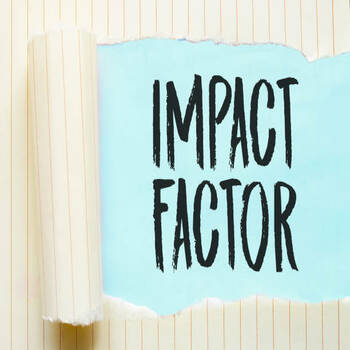Impact factor
The impact factor (IF) is a measure of the frequency with which the average article in a journal has been cited in a particular year. It is used to measure the importance or rank of a journal by calculating the times its articles are cited.
The frequency with which the typical article in a journal was referenced in a given year is gauged by the impact factor (IF). By counting the number of times its articles are mentioned, it determines the standing or significance of a publication.
How Impact Factor is Calculated?
The calculation is based on a two-year period and involves dividing the number of times articles were cited by the number of articles that are citable. The calculation divides the number of citations by the total number of citable publications during a two-year period.
What is the Role of Journal Impact Factor and its Peers?
The journal impact factor (JIF) measures the number of times an average article, published in the previous two years in a particular science journal, was cited in a given year. This scientometric index is also known as the impact factor (IF). Its primary purpose is to show the relative importance of a journal within its respective field. Consequently, high impact factor journals are usually considered more prestigious than lower-impact journals. It’s important to understand that the impact factor doesn’t measure the impact of individual articles but that of a journal.
Measuring a Journal Impact Factor
Use journal metrics to understand the impact of a journal :
- The effect of journal citations is measured using Cite Score measures. Calculated using information from Scopus, the biggest abstract and citation database of peer-reviewed literature, these metrics are free, thorough, transparent, and up-to-date.
- SJR, or SCImago Journal Rank, is founded on the idea that journals may gain reputation from each other by citing one another.
- Source Normalized Impact per Paper, or SNIP, is a complex statistic that takes into account variations in citation styles that are particular to a certain subject.
- JIF, or journal impact factor, is determined by clarivate Analytics as the average of the total number of citations to a journal’s articles during the previous two years divided by the total number of “citable” publications over the prior two years.
- H-index – Although it was initially intended to be an author-level statistic, journals and higher-order aggregations of research papers have been using the H-index.
The validity of the impact factor has been disputed by many people.
Here are a few causes for this:
- Based only on quantitative information : The Impact factor solely takes numerical data into account. In the current world, qualitative aspects are not taken into consideration. It does not account for more modern means of utilizing and spreading research, such as news and community information, citation management downloads, Twitter mentions and postings, and citation management.
- Only indexed journals :Because impact factor is exclusively based on citations in indexed journals, it excludes data from journals that might not be indexed as well as information from other sources, like conference papers.
- Basic concepts : In academia, basic or summarizing material is often mentioned most frequently. This implies that journals with greater impact factors are more likely to publish publications with basic information. It’s possible that journals that publish obscure or novel information won’t have as high an impact factor. Some claim that the impact factor motivates academics to pursue mainstream research and themes.
- Influence :Scholars don’t always have to cite something for it to be influential. Sometimes researchers just read something and it influences them, regardless of if they cite it in a future paper or piece of research.
- International Sources : English is the primary language of publication for ISI journals. This implies that the discussion excludes a lot of international sources.
- Skewing Impact Factor :It has been suggested that journals have the power to manipulate the impact factor for their own publications. To increase their impact factor before publishing a paper, they will request that they cite additional journal papers. We should be aware of this because it is NOT a typical occurrence.
Sources
https://guides.library.illinois.edu/c.php?g=621441&p=4328608
https://scientific-publishing.webshop.elsevier.com/research-process/what-journal-impact-factor/


